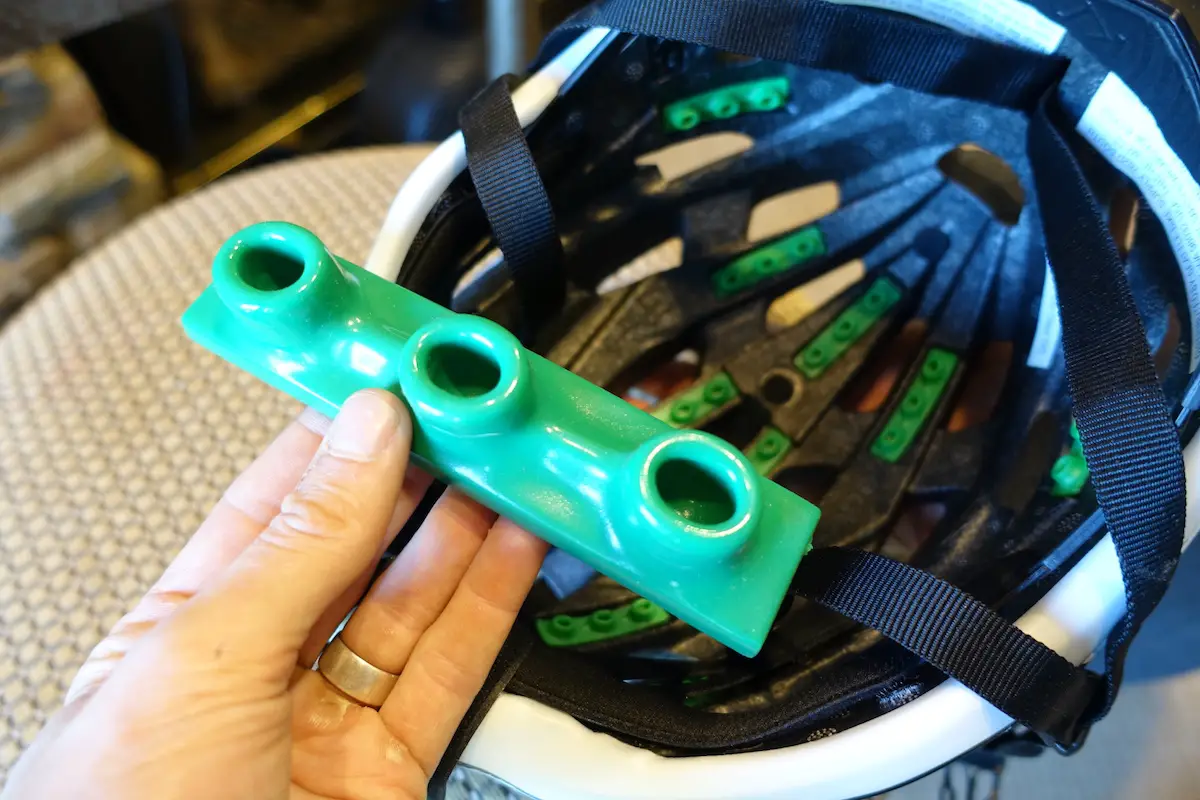Most brands out there make bicycle helmets for safety. Of course wearing a helmet is a choice to protect your skull and brain in the event of a crash, whether that’s just a whack to the head from a low-hanging tree branch, or a full-speed slap onto the ground after sprawling over the bars.
Then there are brands like Kali Protectives.
Kali has been building helmets and protective wear for well over a decade now, and the Californian brand takes helmet safety very, very seriously. Owner and lead designer, Brad Waldron, is well known through the industry for his obsessive attention to detail and constant drive for improving the ability of his helmet designs to protect the rider wearing them.
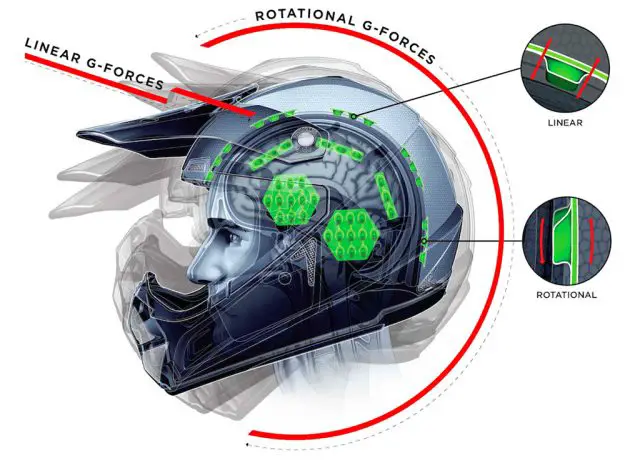
First seen in use at last year’s Eurobike show, the new LDL technology is an example of Kali’s keen interest to pursue out-of-the-box ideas to provide a tangible improvement to rider safety. Using Armourgel (a UK invention), these small bright-green inserts are made from a rubber-like material that allows them to compress, twist and deform under impact to help absorb shocks. You may have seen Armourgel before, specifically in certain knee pads from Bliss Protection.
Aside from increasing the helmet’s linear impact absorption, the LDL inserts also allow the helmet to better absorb rotational impacts too, which can often be far more dangerous when it comes to concussion. The best way to think of the LDL technology is as an alternative to MIPS, but with the added safety bonus of increasing the helmet’s linear force absorption capabilities.
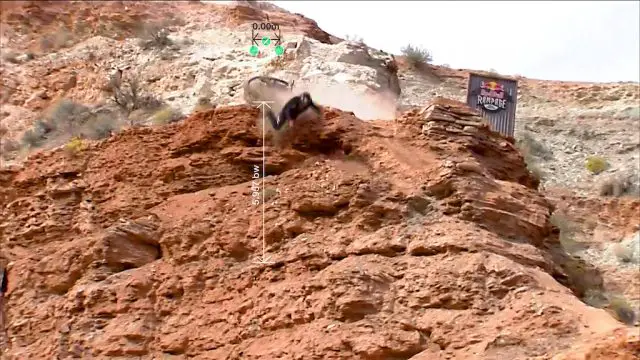
Before going further into the physics of it all, lets take a look at something absolutely mental. Remember that yuuuuuge crash from last year’s Red Bull Rampage? That rider was Nicholi Rogatkin, and he dropped a helluva long way after breaking traction and . In case you missed it, here’s exactly how it all went down;
Now Nicholi Rogatkin is very clearly an incredibly lucky man. To have not only survived that crash, Rogatkin was able to walk away without any serious injury. Then he hopped back on the horse and finished his run. Yes, really.
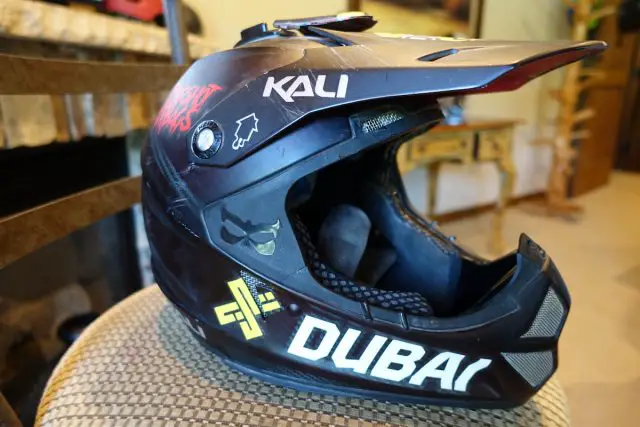
So, why the big Rampage crash? Rogatkin is sponsored by Kali Protectives, and so he uses the brand’s full-face Shiva helmet to keep his brains tucked inside his skull where they should be. The helmet you’re looking at above here is Rogatkin’s helmet post-crashing at Red Bull Rampage. What’s incredible is that there really is very little external damage caused to the helmet. And if you’ve just watched that video, you’ll be just as surprised as we are in the fact that Rogatkin’s helmet doesn’t now resemble an exploded styrofoam cup.
The reason? Much of the force wasn’t a direct impact, but rather an oblique and angular impact causing heavy rotation of both Rogatkin and his noggin.

Here’s where things get even more interesting though. One day before Rogatkin’s huge crash, Brad Waldron took a Shiva full-face helmet and added a series of LDL inserts for Rogatkin to try out. We’re sure Waldron wasn’t hoping for his rider to take such a massive spill, but he certainly hoped the helmet would protect Rogatkin in the event of such a fall on such a brutally dangerous course.
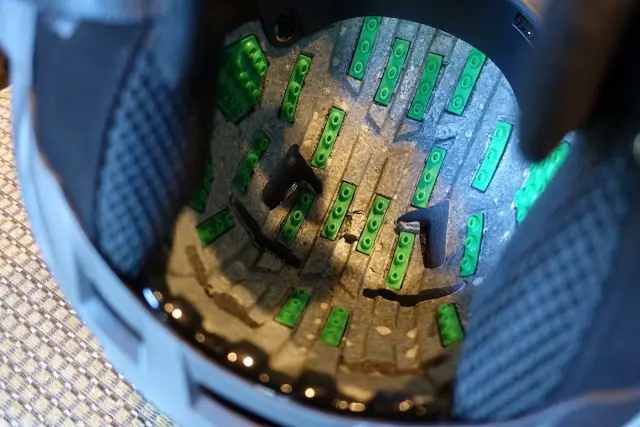
This photo here is of a new production Shiva full-face helmet, and it shows the final arrangement of the LDL strips that are used to line the inside of the foam EPS shell. There are more strips, but the same fundamental design and shape is the same, with the small sucker-like blobs present in slim vertical strips from front to back.
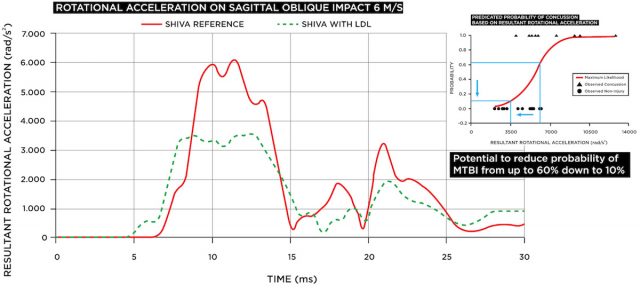
And here’s the science-y bit.
Kali has tested the Shiva helmet both with and without the LDL inserts to see the effect that the Armourgel-based material has on the lid’s ability to absorb impact energy. As you can see in the above graph, the LDL-equipped helmet is able to offer a noticeable improvement in reducing the chance of concussion and brain damage on the rider underneath that lid. To be more specific, there’s a 24% reduction in peak acceleration under a direct impact, and a 20% reduction in peak acceleration during a rotational impact.
In talking with Waldron at PressCamp, he admits that the current standards for helmet testing focus too much on remaining in-tact for direct hits. Current helmet standards dictate that a helmet needs to be capable of taking a 300g force without falling apart. That means helmet manufacturers have to make helmets super tough to pass that test, but in Waldron’s opinion, that means they’re far too stiff as a result.
300g is indeed a lot of force. Waldron’s research tells us that 106g of force is enough to cause a mild head injury and an 80% chance of concussion. So that should put the 300g figure into perspective.
However, Waldron also understands that while he’s tried in the past, changing bicycle helmet safety standards is no easy feat. Instead, he’s conceded in working with those standards, but improving his own helmet standards within the existing parameters. LDL is one such technology, and Composite Fusion Plus is another (we’ll talk a little more about that below). Fundamentally, it’s all about putting softer material closer to the rider’s head, because, well physics. The softer the foam and more compliance built in (with solutions such as LDL), the more the helmet can absorb and distribute impact forces so your brain doesn’t have to.

Since coming up with the LDL concept, Kali has been adopting the technology through its premium helmet line. It’s featured in the Interceptor helmet that David checked out during Eurobike, and now it’s being used in two all-new value-oriented helmets called the Alchemy and the Therapy.
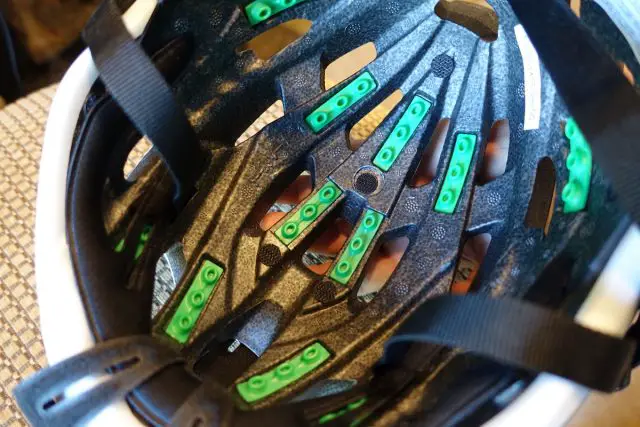
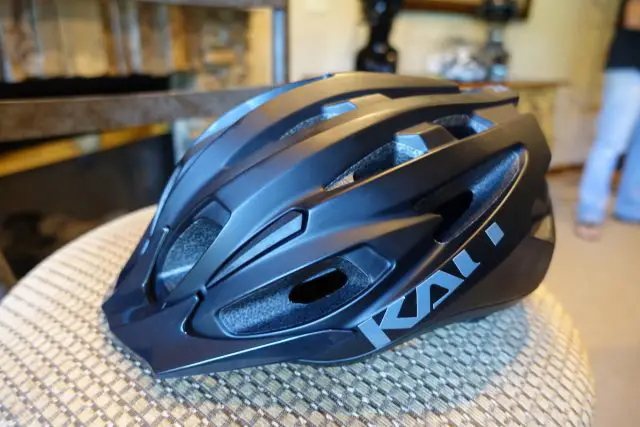
This black helmet is the new Alchemy. It’s the same helmet as the Therapy, albeit with a peak for full MTB stylin’. Both helmets will retail in the US for $100 USD, which is darn competitive for a helmet containing anti-rotational technology. There are 21 vents molded into the Alchemy’s EPS Composite Fusion foam core, and a polycarbonate shell wraps the outside of the core, while also being used on the underside of the helmet rim.

Kali Alchemy Helmet Features
- Composite Fusion molding technology
- EPS foam core
- Polycarbonate shell & underwrap
- Low Density Layer (LDL) technology
- Washable, anti-microbial moisture wicking padding
- Break-away visor
- Micro-Fit closure system w/2-position vertical adjust
- 21 vents
- Sizes: S/M (54-58cm) & L/XL (58-62cm)
- RRP: $100 USD
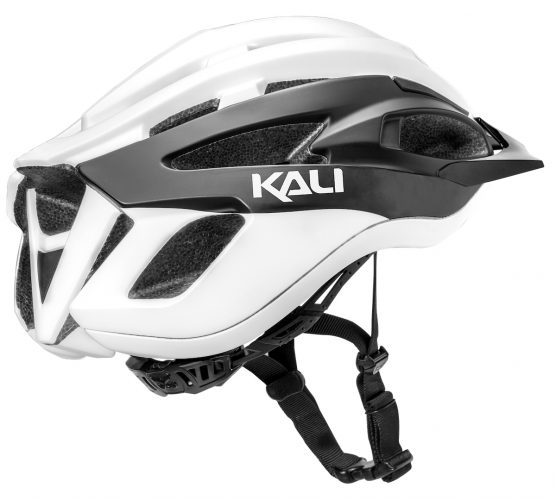
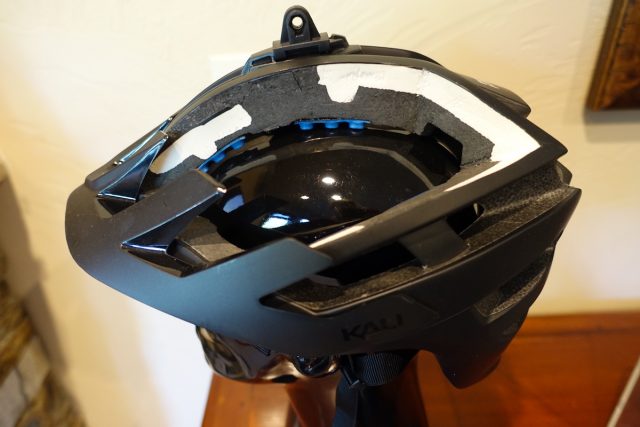
This helmet cutaway here isn’t a ventilation experiment or someone’s practice go at slicing open a cake for their food blog, but rather a visual display of some of the tech going on with Kali’s high-end Interceptor helmet. The Interceptor is Kali’s flagship trail/enduro helmet, featuring a thicker shell and more coverage around the sides and back of the head.
Inside the helmet, you’ll be able to spot the blue LDL strips that sit atop the rider’s head. Also visible is the two-tone EPS foam core, which illustrates the dual-density construction used in Kali’s ‘Composite Fusion Plus’ design. The crux of it is this; put softer density foam closer to the rider’s head for more cushioning, and put a firmer density foam on the outside of the helmet for the necessary impact strength to survive the big impacts required for the current 300g strike test.

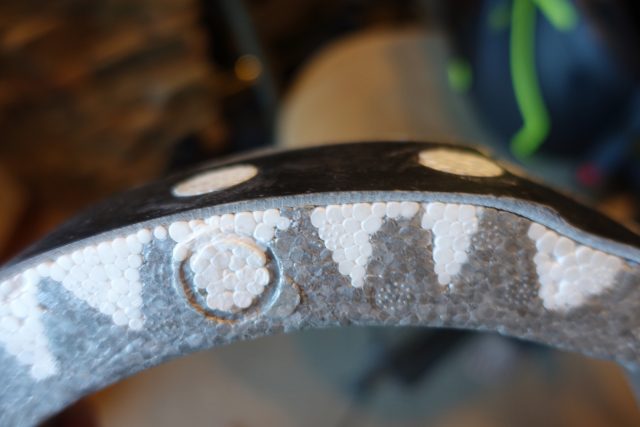
And here’s an even better illustration of the ‘Conehead Technology’ used in the Composite Fusion Plus design. Small circular cone-shapes are molded into the EPS foam core, because that particular shape is quite good at deforming and crushing in a linear fashion, and therefore taking the hits.
In addition to all the safety tech and the launch of the new Alchemy and Therapy helmets, Kali is also keen to point out that the brand is now dealing direct with UK mountain bikers, rather than through a distributor. For more information on the helmet and protective wear range, head to the Kali Protectives website.
